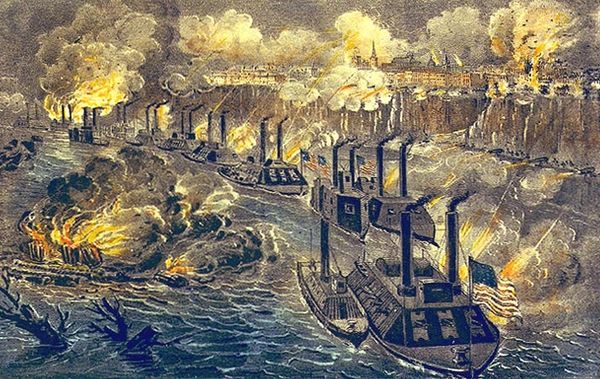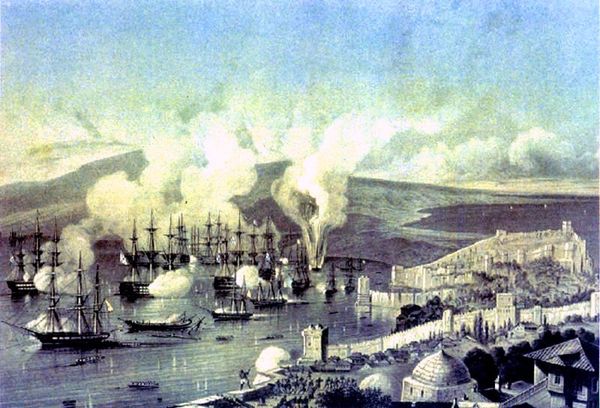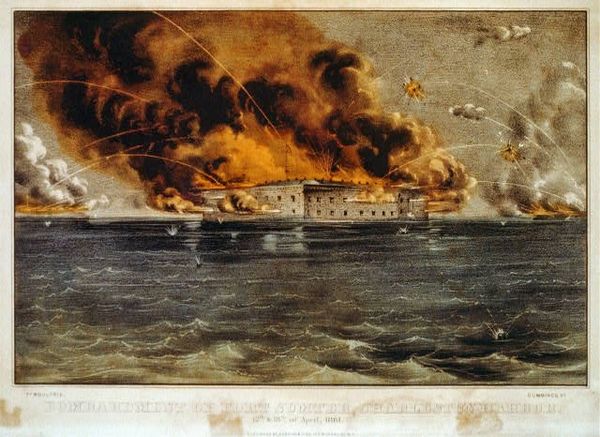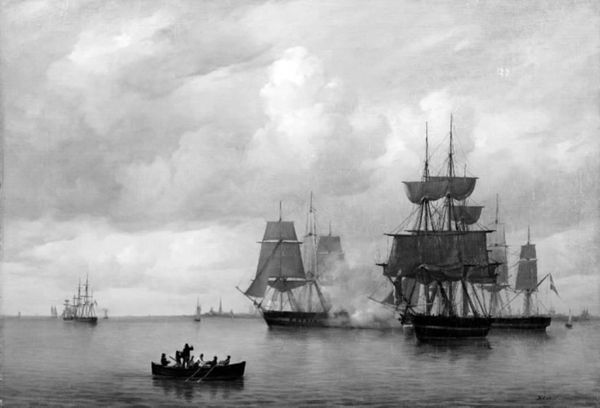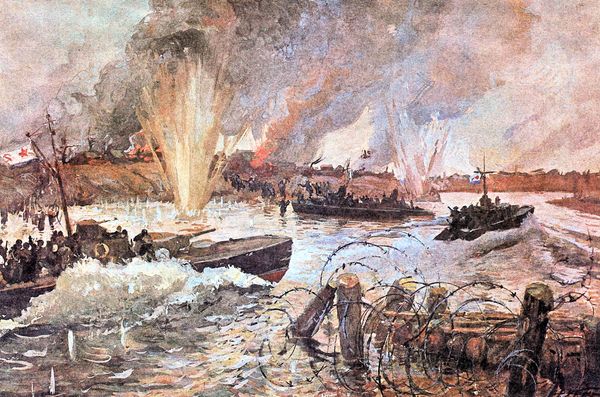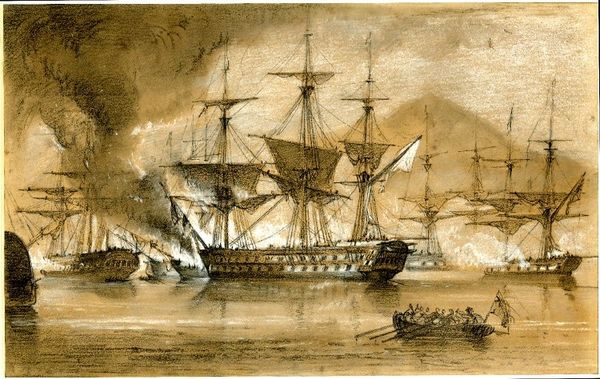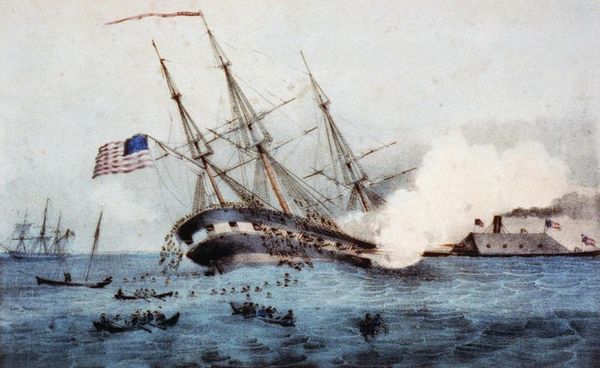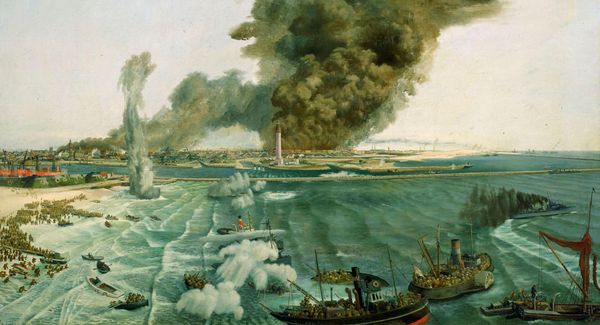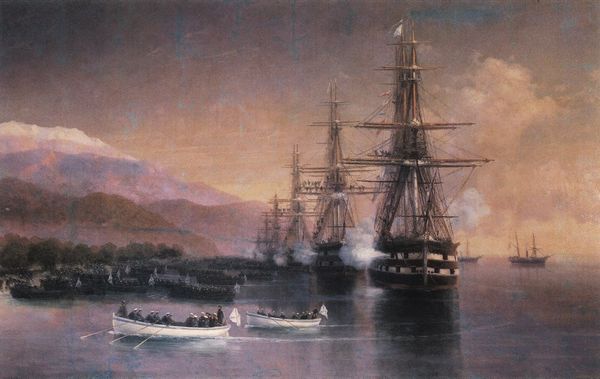
Bombardment and capture of Fort Hindman, Arkansas Post, Ark. Jany 11th 1863 1863
0:00
0:00
lithograph, painting
#
boat
#
lithograph
#
ship
#
painting
#
war
#
landscape
#
oil painting
#
water
#
history-painting
#
watercolor
Copyright: Public domain
Editor: Here we have "Bombardment and capture of Fort Hindman, Arkansas Post, Ark. Jany 11th 1863," a lithograph by Currier and Ives, dating back to 1863. The scene is quite striking – chaotic even – with the contrast of the dark ironclad ships against the white smoke. How would you interpret the composition in this work? Curator: The stark juxtaposition of the rigid geometric forms of the ships against the organic cloud-like smoke plumes creates a powerful tension. Notice how the artist uses line and texture. The hard lines of the ships, rendered with considerable detail, imply strength and industrial might. In contrast, the swirling smoke is more fluid, rendered with softer, less defined lines. Do you observe any further visual oppositions within the work? Editor: Yes, I see what you mean. Perhaps the stillness of the water compared to the activity of the bombardment itself? Curator: Precisely! And consider the use of colour. The limited palette – primarily blues, greys, and browns – contributes to the sombre mood, punctuated by the fiery oranges of the explosions. How do these stylistic choices inform the overall reading of the piece? Editor: It almost feels staged. It isn't photorealistic, but illustrative in its detail and contrasts, drawing attention to the formal qualities rather than pure representation. Curator: Indeed. This is a meticulous orchestration of form and colour, transforming a historical event into a powerful visual statement of industrial war. What new perspectives do you take away regarding art's purpose? Editor: This was an eye-opening way to consider the elements that comprise visual storytelling. It seems like the mood and themes come directly from those elements. Curator: An astute observation. This formal reading underscores that artwork can transcend its subject matter to explore deeper aesthetic and conceptual terrain.
Comments
No comments
Be the first to comment and join the conversation on the ultimate creative platform.
